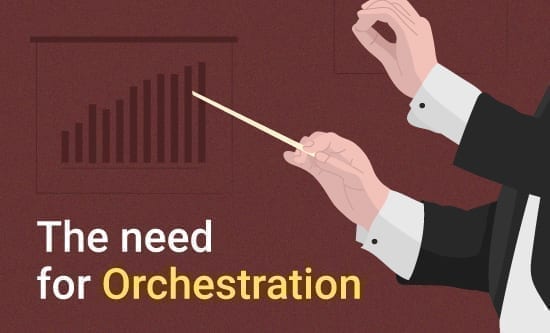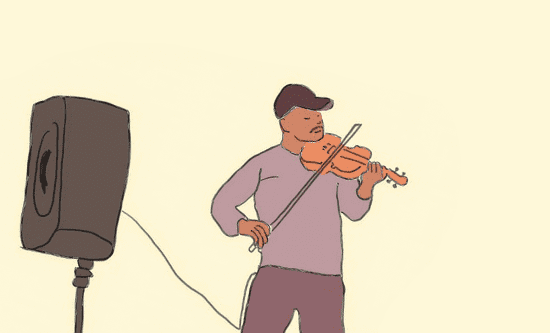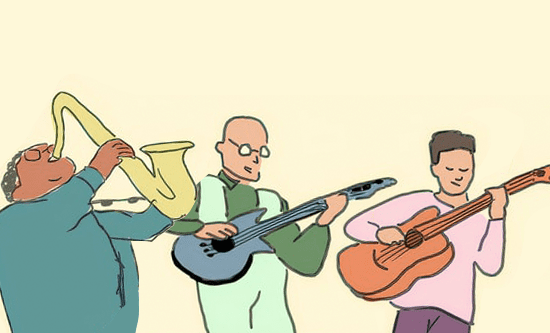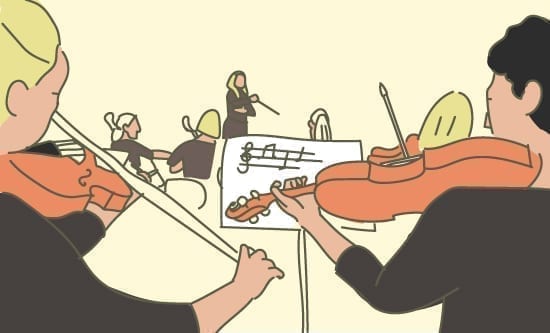My dad was a great fan of Andre Rieu and would spend hours listening to his concerts. As I was thinking about an emerging challenge that marketers are currently facing, I reflected on the orchestra. What makes Andre Rieu stand out from other great conductors is how rich and complex an orchestra stands out from a band or a soloist. I started to think about this marketing problem in the context of an orchestra, and I write this with Andre in the background…reminding me of my dad.
Most organisations have as their goal to become customer centric, which inherently means to make decisions from a customers perspective. The literature is overflowing with case studies where a customer centric approach increases customer engagement, profit and shareholder value and as a general principle, it is widely accepted as the right strategy to pursue. However within organisations, at an operational decisioning level it’s much harder to execute a customer centric strategy. I’m only going to concern myself with communication decisioning right now otherwise, we will be here until next century. Within an organisation there is conflict, sometimes the conflict is profit driven, sometimes it is objective driven, and sometimes just internal competitiveness.
Marketers easily act as soloists, and I would argue that in large organisations, the soloist strategy is the easiest short term strategy to follow. The soloist strategy is centered around internal competitiveness, that is, move fast and get my campaign(s) executed first, before my peers. The soloist talks about the customer, but really focuses on output, aiming to put runs on the board to secure their position. Agile, while doing amazing things to unblock bureaucratic processes, encourages soloist behaviour.
Tribes/Squads/Pods are self contained, and compete with each other to produce output the fastest. The customer’s perspective can only ever be considered within the remit of the tribe. For example, a home loan tribe would consider, which home loan is best for a customer but have no regard for the other bank products like credit cards, transaction accounts or service propositions outside their remit. At best, campaigns are executed based on a calendar and at worst, campaigns execute without any coordination and contact frequency rules that are used to protect customers from receiving multiple communications at once. You can also generalise these examples by capability (Digital vs Marketing team) or lifecycle (Acquisition vs Retention marketing) – the message still holds true.
Marketers sometimes play in bands, bands are always voluntary and generally come together between people who share a similar vision for their music. Bands are self regulating and there is peer pressure to conform to the band but participation is voluntary. Marketers in some organisations find it easy to form bands and are generally small in size with few members exerting enough peer pressure to create a workable balance between individual needs and the needs of the collective. Because of the small size of a band, most members are playing constantly, everyone has a role to play constantly. Lead roles are often shared, and often most members get to be a soloist for a while. Discipline is usually maintained by one of the band members whose role is made easier by a shared and common goal. Campaign priorities are negotiated between the band members, the most forceful members often get the most priority, or there is a negotiated position to give every member a fair go. Depending on the dynamics of the group ,sometimes this works and sometimes it doesn’t. The problem with bands is that they are inherently unstable as they rely on the continuous good will of the members to function which often breaks down if a key member leaves.
Orchestras are a completely different type of musical organisation, and although they create music like soloists and bands, they do it in a completely different way. For a start, orchestra’s don’t come together for the same reasons as bands and don’t produce music for the same reason as soloists. Orchestra’s are very different from one very important aspect – an orchestra outlives all individual members. In fact, orchestra’s are designed to create the same music despite the flow of different musicians in and out of the orchestra. Some orchestra’s play continuously for hundreds of years.
When I talk to senior marketers, there is a common theme, the ability to properly orchestrate customer marketing is being broken down by a trend towards marketing automation tools that are simpler and easier to use (simplistic single journey definition as they would demo it) but have less developed orchestration capabilities (what happens when you have many, potentially competing – or worse, contradicting – journeys). Orchestration is important because it’s what turns the collective noise of soloists into music.
There is an emerging and growing need for orchestration to optimise the finite opportunity we have to engage with customers about the right thing, to create consistent and transparent balance between financial and customer objectives. It requires a process that recognises, contact control, relevance, value and journey. The process must sit above the mechanics of targeting and it must arbitrate across all potential contacts. Ironically, this type of orchestration simplifies the marketing process and removes internal conflicts because it establishes a competitive environment that creates focus on the right customer communication and harmonises it together. To be successful it needs, rules, discipline and…a conductor.
 by Regan Yan, the CEO of Digital Alchemy.
by Regan Yan, the CEO of Digital Alchemy.
Regan is a subject-matter expert in analytical database marketing and customer relationship marketing, as well as an in-demand presenter and keynote speaker at national and international events. He also authors thought leadership pieces on data-driven marketing that can be found on the DA Blog.






